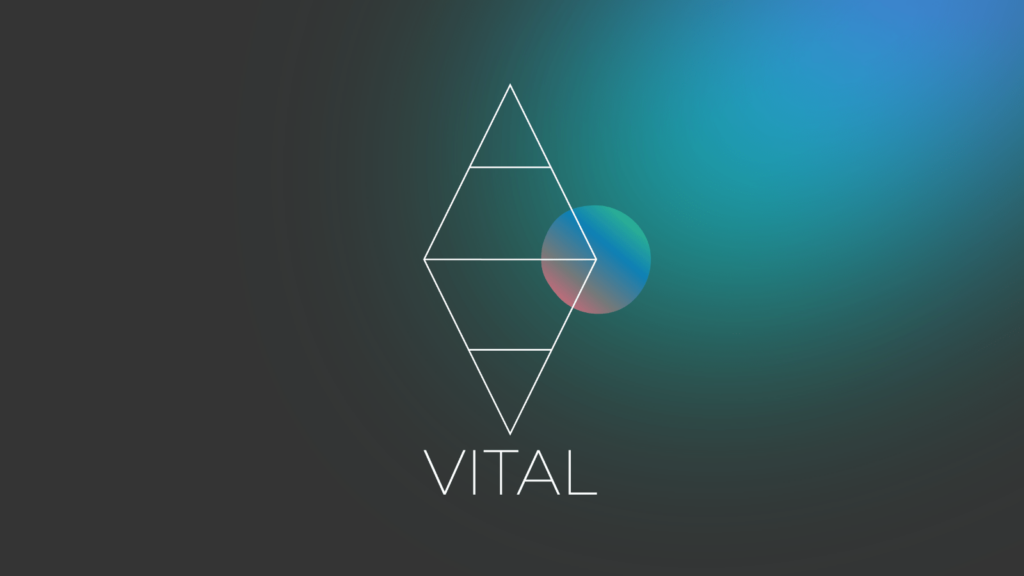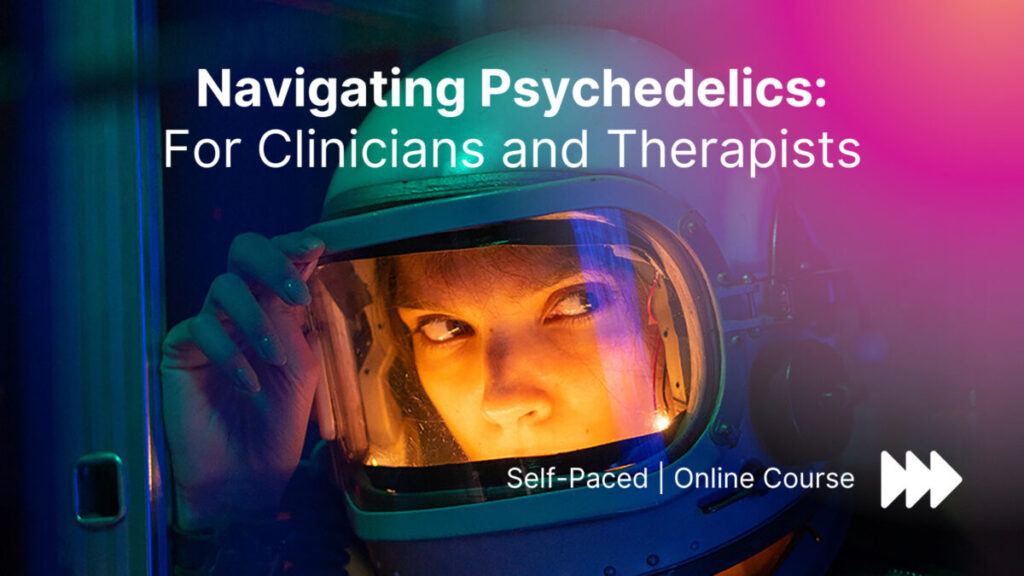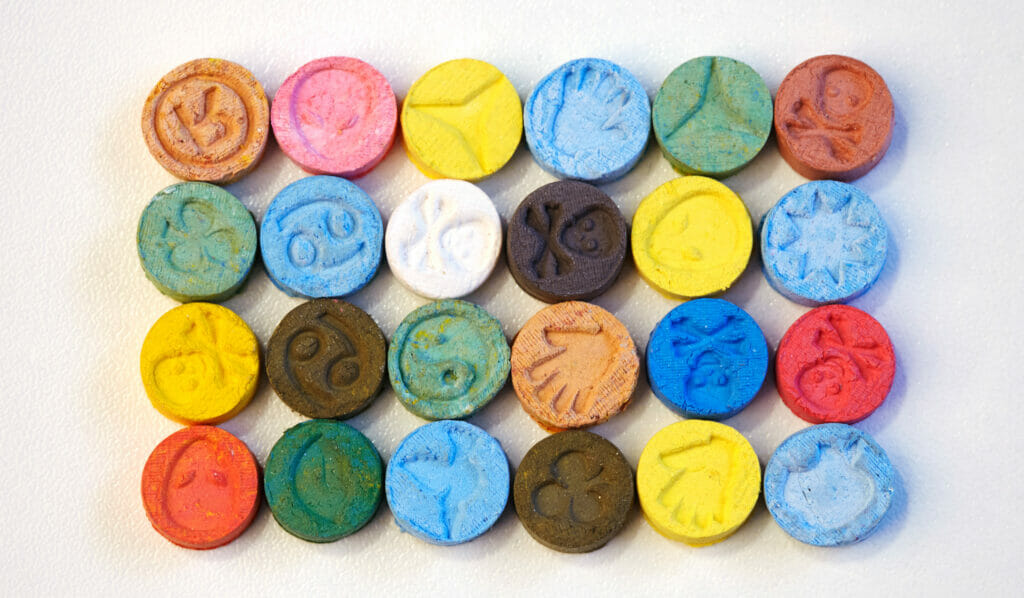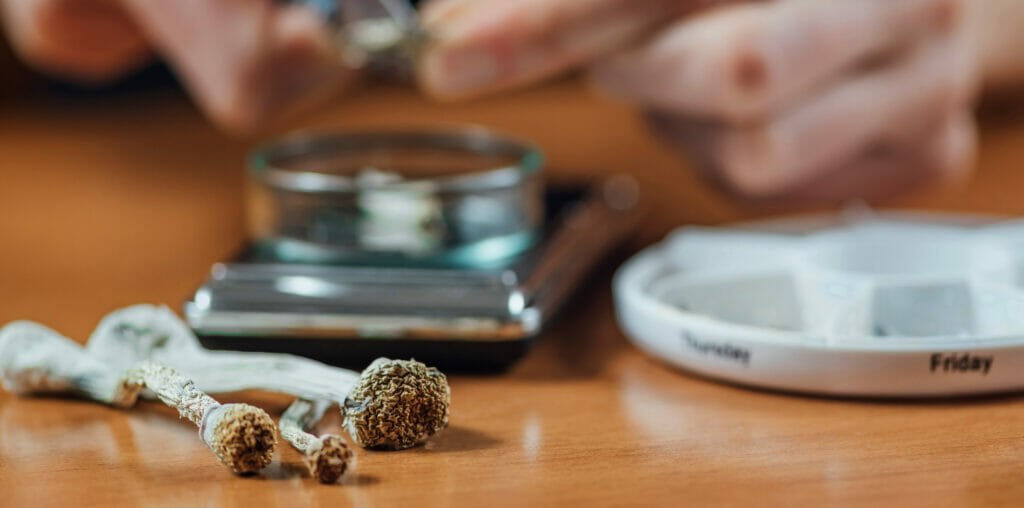Prolonged negative body image will often lead to depression and anxiety, and unfortunately for many people, can lead to body dysmorphia or an eating disorder. Could psychedelics help reframe one’s relationship with their body?
Psychedelics offer promise for those who struggle with eating disorders – 9% of the world’s population according to the National Association of Anorexia Nervosa and Associated Disorders.
These conditions primarily impact women, and now more of them are coming forward to share how psychedelics are helping them leave a constant cycle of dissatisfaction, body dysmorphia, and the accompanying anxiety, depression, and stress. They explain how the use of psychedelics helped them develop a new relationship with their eating disorders and improve their self-image.
While large-scale studies are (currently) scarce, the anecdotal evidence of these shifts is powerful.
“The first time I sat with a hero’s dose of magic mushrooms, I realized I could put my eating disorder down and never carry it again,” shares Francesca Rose, who is now an eating disorder recovery advocate. “It finally clicked: my eating disorder was not part of me. It wasn’t even mine. It all made sense. I was free from my eating disorder. I no longer needed to control food or my body to feel safe or worthy.” Having her life changed through the use of psychedelics and being on the recovery path for 13 years, this psychedelic-assisted shift is part of what led her to add her current work; supporting other women with eating disorders along their healing journeys.
For many women, talking about their insecurities is still seen as a taboo, weakness, or shameful. Yet finding a supportive space to speak of one’s challenges, plus engaging in embodied experiences – including psychedelic sessions – can offer a gateway to healing. Rose’s work also includes leading embodiment practices via yoga and conscious dance. By helping women speak of their struggles and reconnect to their bodies, she aims to break these stigmas.
Adding in the intentional and safe use of psychedelics can allow women to reconnect with their bodies and cultivate a gentler relationship with themselves. Rose says, “An eating disorder is unconsciously employed as an attempt to feel protected in the world and to even give a sense of meaning and identity. The internal world is fractured and the eating disorder is a way to try to stitch things together, even if it’s an unsustainable method. When we are journeying with psychedelics and engaging in post-journey integration, people can find they rely less on the eating disorder because there is a general sense of ease in the world and more internal wholeness. We can get in touch with our essence, and connect with our inherent worth, belonging, dignity and divinity. Psychedelics can help us embody pride and self-acceptance. We can connect to love, and feel our capacity to give and receive love.”

Understanding Negative Body Image
To have a better understanding of these conditions, we need to first comprehend body image. For most women, it’s not as simple as liking or disliking their own bodies. Body image is complex, and can include a combination of our feelings, beliefs, and perceptions of how our body looks to us and others, the understanding of what it can do, and its estimated size.
Body image issues can start as early as 5 years old. Changes to our physiques kicked off by puberty can deepen our dissatisfaction. Culture also exerts a huge influence on the way we view ourselves. The way society sees gender, the color of skin and hair, and countless other things can also impact the way a person thinks and feels about their physical appearance.
Body dysmorphia is a psychological disorder characterized by an excessive concern for the body, causing the person to overvalue small imperfections or even imagine imperfections. This creates a negative body image and lowers self-esteem. It can drive possible eating disorders and problems in social, professional, and personal lives. Both men and women may experience body dysmorphia and eating disorders, though women are three times more likely to have their lives affected by it.
In the United States, approximately 30 million people suffer from some type of eating disorder. Of these 30 million, 70% do not have the assistance of a specialized professional. As a consequence, anorexia nervosa, one of the most common eating disorders, has a 5.9% mortality rate – one of the highest rates within mental health conditions.
The Potential of Psychedelics in Building a Positive Body Image
Eating disorders are notoriously challenging to treat relative to other mental health disorders. Traditional treatments, such as Cognitive Behavioral Therapy (CBT), have a remission rate of about 45%, a relapse rate of about 30% within one year, and can be hard to follow. Now, some experts and researchers are considering psychedelic therapy as an alternative, and are analyzing the potential benefits of this treatment.
“Eating disorders typically develop as maladaptive coping mechanisms when internal resourcing is overwhelmed by what’s happening in a person’s life,” says Lauren Taus, a California-based therapist who offers ketamine-assisted sessions. Taus and other therapists who contributed their perspectives for this piece say that psychedelic therapy can alleviate the symptoms that are normally associated with these conditions, such as depression and anxiety, in ways that traditional therapy fails to achieve. As Dr. Adele Lafrance points out in this article for EdCatalogue, psychedelic therapy has “the potential to alleviate symptoms that relate to serotonergic signaling and cognitive inflexibility, and the induction of desirable brain states that might accelerate therapeutic processes.”
Taus shared an example of her own work with psychedelics as an alternative treatment that helped her with many of her challenges, including her eating disorder: “My experience with empathogens has invited me to see how much conflict was warring inside of me. I saw all the pain of my personal history, and all that was beyond my control in my family system. Fundamentally, these psychedelics invited me to directly process what was beneath the surface. I accessed great grief, rage, and fear while opening to deep levels of love and compassion for myself and everyone else. I understood my parents and the choices they made, so I could forgive them. I also sourced the willingness, desire, and strength to fight for myself – and my life.”

So what is it about psychedelics specifically that can facilitate profound breakthroughs like Taus’? For starters, they can positively impact the Default Mode Network (DMN), which handles communication between brain regions. This region appears to be hyperactive in some mental health conditions, including depression, anxiety, and OCD. And certain hallmarks of eating disorders, such as the poor cognitive flexibility seen in many anorexia nervosa patients, may also be related to an overactive DMN. Studies such as “Rethinking Therapeutic Strategies for Anorexia Nervosa: Insights From Psychedelic Medicine and Animal Models” indicate that psychedelics lower the activity in this area, and, by doing so, allow us to create new thought patterns, giving us a fresh perspective on life, the world, and ourselves.
Another way that psychedelic psychotherapy can be effective is by helping a person understand the true source of their feelings of dissatisfaction. A 2013 analysis of why eating disorder therapy fails reveals that a patient’s resistance stems from the disorder’s “ego-syntonic” nature. Ego-syntonic means that the ego’s demands and aspirations drive many of the disorder’s behaviors, feelings, and values. Psychedelic substances can offer a temporary dissolution of the ego, allowing the possibility of transformation, healing, and change of certain behaviors, thought patterns, or addictions.
Taus explains that “Psychedelic assisted psychotherapy supports embodied change where traditional psychotherapy often stays in the realm of cognition and intellect. A person, for example, may come to understand with depth and clarity their patterns in therapy, but still struggle to shift them.” For example, a woman might know that purging is a harmful behavior that leads to feelings of shame. “She may even know exactly why and when it all started, but still she may not be able to stop. Psychoactive substances can create experiential shifts that more efficiently translate into internally-led and sustained behavioral change. The job of the therapist is to provide a safe container for the exploration and a good relational context for a person to make sense of the experience and to anchor in the good that comes from it.”
It’s important to highlight that the use of psychedelic substances on their own does not work as a magic bullet and treatments must be done alongside psychotherapy and/or other healing modalities such as journaling and yoga. A holistic approach seems to be the most effective path to long-term healing for women with eating disorders and body dysmorphia.

The Research So Far
Ketamine, ayahuasca, MDMA, and psilocybin are the four psychedelics that have been the focus of the majority of the latest research for the potential treatment of eating disorders. Let’s take a look at how each one could help with eating disorders:
Ketamine:
Ketamine is a non-classical psychedelic that can alter consciousness for a short period of time. This synthetic compound’s antidepressant qualities have been researched for treating severe depression, PTSD, and OCD.
Ketamine can be administered through IV, injected, taken orally, or it can be insufflated (blown into a body cavity, such as the nasal passages). The dose is titrated according to weight, with the understanding that everyone metabolizes the medicine differently. Ketamine is known for its dissociative effects, such as feeling like things are moving in slow motion or that you are separated from reality, with objects looking different and other characteristics that can be seen in this study.
“With regards to ketamine, the dissociative experience can translate into more joy in embodied experience. Ketamine-Assisted Psychotherapy (KAP) creates a break from the ordinary mind and a loosening of the belief systems that eating disorders are so rigidly held by. From a scientific perspective, psychedelics interrupt the default mode network, which governs self-image, memories, beliefs, and patterns.” says Taus. “The drug essentially creates an opportunity to reorganize the brain into a system that is more supportive for good living. Ketamine also results in increased neuroplasticity, which creates a golden hour opportunity for potent therapy work with a client 24-48 hours after a KAP experience.”

A few studies include: Treatment of compulsive behaviour in eating disorders with intermittent ketamine infusions, Ketamine and Activity-Based Anorexia, and the ongoing work of Dr. Adele LaFrance with Emotion-Focused Family Therapy.
Ayahuasca:
Ayahuasca is a fermented herbal drink that contains dimethyltryptamine (DMT), one of the most potent psychedelic drugs known for its role in shamanic or religious ceremonies. The brew has been utilized as a sacred ritual by various South American Indigenous tribes for at least 1000 years. Journeyers frequently claim mystical and transcendent visions that lead to self-discovery.
The first ever study of ayahuasca’s potential to help people heal from eating disorders was published in 2017, co-led by Dr. Adele Lafrance and Dr. Kenneth Tupper. The majority of the people in the study said that ayahuasca helped to reduce their eating disorder symptoms and showed them the root cause of the disorder. Regarding the purging effects of the brew, participants found it easy to differentiate between an eating disorder purge, and the purge of an ayahuasca experience.
The ayahuasca experience has the ability to favorably affect behavior, stimulating self-reflection and increased awareness. Studies suggest that drinking it can aid in the treatment of anxiety, addictions, and depression, as well as eating disorders by also shifting body perceptions.

One study is: An exploratory study of experiences with conventional eating disorder treatment and ceremonial ayahuasca for the healing of eating disorders.
MDMA:
MDMA, another laboratory-created compound, has a physiological effect that alters people’s behavior such as openness. MDMA boosts serotonin levels while also upping oxytocin, dopamine, and other chemical mediators, resulting in feelings of empathy, trust, and compassion. The substance also has an effect on the way people process trauma and emotions for a period of several hours.
In clinical settings, MDMA is taken orally in capsules. The patient first takes a full dose (75-125 mg) and has the option to add a second dose about 2 hours into the session. An MDMA session will typically last between 6 to 8 hours.
MDMA causes an increase in prefrontal cortex activity, which is important for information processing, and a slowing in the amygdala, the part of the brain that is key in processing memories and emotions associated with fear. The key therapeutic benefit of MDMA is its capacity to excite the brain, allowing it to create and store new memories. Patients become more emotionally flexible and capable of exploring challenging memories during psychotherapy sessions, which often leads to long-term changes in how they react to emotional changes.

A few studies include: The potential use of MDMA assisted psychotherapy in the treatment of eating disorders comorbid with PTSD, A Multi-Site Study of MDMA-Assisted Psychotherapy for Eating Disorders (MED1).
Psilocybin:
Psilocybin is a substance generated by more than 100 different mushroom species around the world. Psilocybin is said to have the best safety profile of all psychedelic substances. The fungi could be useful in the treatment of eating disorders by targeting the brain’s serotonin imbalance and therapeutically shifting the person away from symptom-focused treatment. This could establish changes in self-worth and self-compassion.
Aside from that, the efficacy of psilocybin therapy in the treatment of OCD shows how it could be useful in the treatment of eating disorders, as obsessive thoughts and compulsive and obsessive actions are also common hallmarks of eating disorders.

One study is: Effects of Psilocybin in Anorexia Nervosa.
Reclaiming Ownership of Your Body with Psychedelics
Psychedelics can help women see their eating disorder as a coping mechanism and not as part of their identity. Once they embody this insight, they can also slowly start to replace bad habits with healthier and kinder new habits. They can rewrite the inner narrative of lies and self-limiting beliefs about their bodies.
Once more, there is a need to emphasize the importance of integration, relationships, and a holistic approach alongside other therapeutic methods and modalities. Change comes with time, effort, and consistency, especially when deconditioning behaviors that have been a big part of our lives for many years.
When asked about how long it takes for those changes to fully take place, Rose points out that “Eating disorders and addiction are transformational experiences that hold enriching value. Indeed, the word, ‘transformation’ means change or conversion. When thinking about recovery, it is not about stopping or restricting a behavior but rather allowing it to change and transform, taking us along for the ride so that our beliefs, feelings, thoughts, behavior, and action take a new form. Grounded, sustainable change does not happen overnight.”
“For me, recovery is about inner personal and spiritual growth, and incremental daily, positive changes. My experience with eating disorders and addiction has led me to believe that they offer lessons and advantages, transforming me into more of who I truly am: alive, free, appreciative, and connected.”
Although more research is still needed to better understand the safety and efficacy of psychedelic medicines and therapy in the treatment of eating disorders, the promising results we’re seeing show that this is a worthy goal to pursue. Stories such as Rose’s and Taus’ are just two among many other women who have experienced transformational change thanks to these compounds.
“With the support of therapy, community, spirituality, and relationships, I no longer judge my body, or effort to dominate her,” says Taus. “My experiences with plant medicines have supported me in understanding my body as a perfect part of nature, and in much the same way that I don’t complain about the shape of a leaf or a wave, I accept – even appreciate – the parts of me I’ve historically struggled with.”
“The power of psychedelic-assisted therapy is in its experiential quality,” she says. “When knowing meets feeling and understanding, we can galvanize the courage and strength needed to shapeshift our lives and reconstruct ourselves.”



